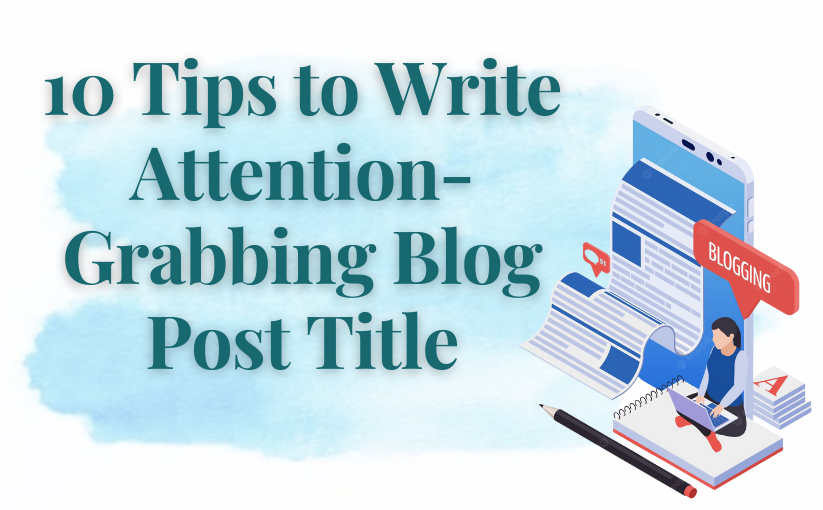We could say that the title of your blog post is the most integral part of it. Nothing you write inside the post (or article) will matter if you don’t capture your reader’s attention with the title and get them to really read it. It makes no difference how good or useful your material is.
It makes no difference what offers or affiliate links you include in your piece, or who paid you to create it. The blog article won’t help you much if you can’t persuade people to read it.
Your title is very crucial when it comes to generating free search engine traffic. When it comes to getting your content to rank, it is the most essential aspect. Yes, there are a lot of other things to consider, but a strong title with the correct keywords will help you more than anything else.
So, how do you come up with a nice, attention-grabbing blog article title? We recommend that you start with a working title for your post and work your way up from there.
Then Return to Work on the Completed Headline, Using as Many of the Tips Below as Possible.
1. Make it Interesting but Keep it Real:
You’re trying to come up with a catchy headline. With it comes the urge to exaggerate the situation and bend the facts a little. While this may result in more clicks, there is a downside. If you exaggerate or tell tiny (or huge) white lies, you’ll lose credibility.
On social media, you’ll see a lot of such headlines. You click through only to be disappointed since the content does not live up to the promise made in the title.
Instead, keep it real and make it intriguing without all the hype. Thinking about what’s in it for your audience is a fantastic place to start.
2. Use Catchy Adjectives:
Make your title more colorful. The more powerful and thought-provoking your adjectives are, the more likely individuals are to act.
3. Begin Your Title with a Number:
It grabs people’s interest. It’s a wonderful method to notify your audience of just how much they’ll get. Studies have shown that digits are more effective than words. As a result, instead of writing “five,” write “5.”
4. Use Words Like “How to” or “What is”:
People are seeking something beneficial and relevant in general. Furthermore, the majority of searches are looking for HOW-TO and WHAT-IS posts. In addition to grabbing people’s attention, using words like “how-to” or “what is” in your title can attract search engines.
5. Keep your Individuality:
You should read and listen to other people, but never lose sight of your own individuality in the process.
6. Keep it Short:
Shorter headlines tend to do better in terms of the blog and social media click-throughs. Keep it brief and sweet, and start thinking about engagement as soon as you read the headline of your article. Pose a question to your audience. Make a remark that gets people thinking.
Keep your eyes peeled for titles that catch your interest. Copy and paste them into a swipe file to show how you may change them to fit your needs and market.
7. Use the Right Keywords:
Remember to incorporate your keywords within the title. This is usually the final thing to do. Always write for your readers first, then do what you need to do to ensure the search engines understand what you’re talking about.
Ranking well for something your readers don’t want to read or click on isn’t going to help you much. You’ll perform well if you focus on your audience first and then optimize for search as an afterthought.
8. Do not Use any Negative Words:
Negative headlines may backfire, leading people to believe you’re expressing something you’re not. Aren’t, No, Not, Never, Nobody, Don’t, Can’t, and Won’t are all words to avoid. They give off a negative vibe, which readers may misinterpret and associate with your brand.
9. Appeal to People’s Cynical Side:
We, humans, are a cynical breed, and we’ll leap at the chance to read about how we’re being misled, tricked, or taken advantage of.
10. Avoid Tricky Words and Puns:
Readers will not attempt to figure out a title if it is too difficult to comprehend. Use simple language and be intelligent, but not too clever, otherwise, readers will bounce and shake their heads.
Conclusion
Implement these suggestions and publish a few blog entries. Pay attention to what is and isn’t working. Each market, each blog, and each audience are different. Use these pointers as a starting point for developing the unique style that connects with your audience and delivers you the outcomes you seek.
-Isabell S.


